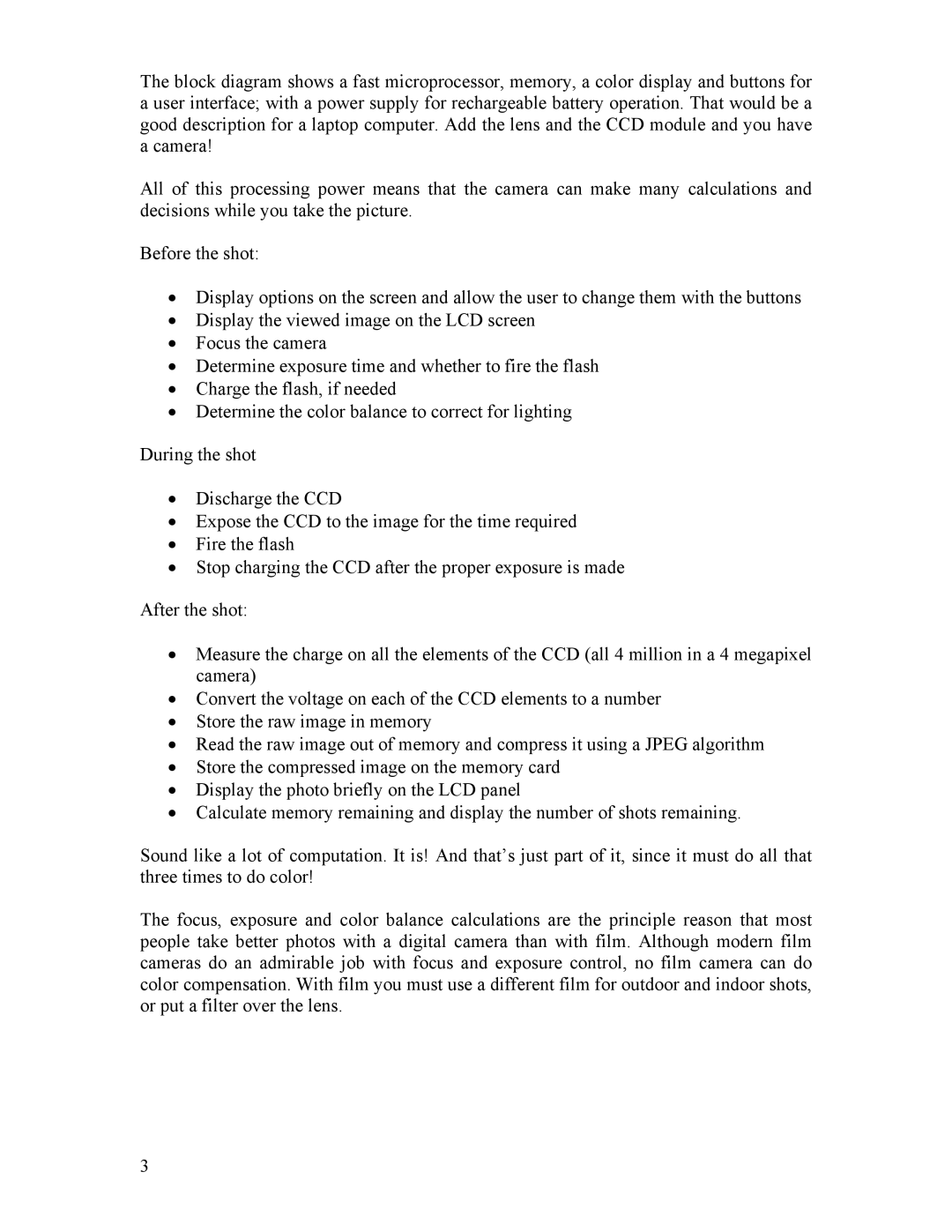The block diagram shows a fast microprocessor, memory, a color display and buttons for a user interface; with a power supply for rechargeable battery operation. That would be a good description for a laptop computer. Add the lens and the CCD module and you have a camera!
All of this processing power means that the camera can make many calculations and decisions while you take the picture.
Before the shot:
•Display options on the screen and allow the user to change them with the buttons
•Display the viewed image on the LCD screen
•Focus the camera
•Determine exposure time and whether to fire the flash
•Charge the flash, if needed
•Determine the color balance to correct for lighting
During the shot
•Discharge the CCD
•Expose the CCD to the image for the time required
•Fire the flash
•Stop charging the CCD after the proper exposure is made
After the shot:
•Measure the charge on all the elements of the CCD (all 4 million in a 4 megapixel camera)
•Convert the voltage on each of the CCD elements to a number
•Store the raw image in memory
•Read the raw image out of memory and compress it using a JPEG algorithm
•Store the compressed image on the memory card
•Display the photo briefly on the LCD panel
•Calculate memory remaining and display the number of shots remaining.
Sound like a lot of computation. It is! And that’s just part of it, since it must do all that three times to do color!
The focus, exposure and color balance calculations are the principle reason that most people take better photos with a digital camera than with film. Although modern film cameras do an admirable job with focus and exposure control, no film camera can do color compensation. With film you must use a different film for outdoor and indoor shots, or put a filter over the lens.
3
